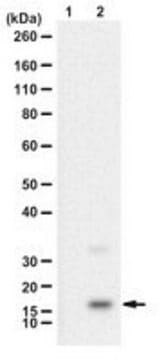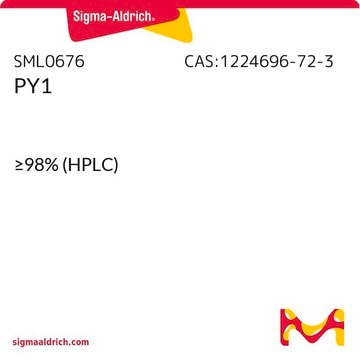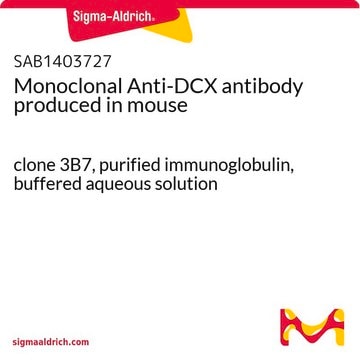SML0737
MitoTEMPO
≥98% (HPLC), powder, antioxidant
Synonym(s):
(2-(2,2,6,6-Tetramethylpiperidin-1-oxyl-4-ylamino)-2-oxoethyl)triphenylphosphonium chloride, Mito-TEMPO
Sign Into View Organizational & Contract Pricing
All Photos(2)
About This Item
Empirical Formula (Hill Notation):
C29H35N2O2P · Cl
CAS Number:
Molecular Weight:
510.03
UNSPSC Code:
12352200
NACRES:
NA.77
Recommended Products
product name
MitoTEMPO, ≥98% (HPLC)
Quality Level
Assay
≥98% (HPLC)
form
powder
storage condition
desiccated
protect from light
color
white to light brown
solubility
H2O: 10 mg/mL, clear
storage temp.
−20°C
Application
MitoTEMPO has been used as a mitochondria-targeted antioxidant.
Biochem/physiol Actions
MitoTEMPO is a mitochondrially targeted antioxidant, a specific scavenger of mitochondrial superoxide. MitoTEMPO is a combination of the antioxidant piperidine nitroxide TEMPO with the lipophilic cation triphenylphosphonium, giving MitoTEMPO the ability to pass through lipid bilayers with ease and accumulate several hundred-fold in mitochondria. Mitochondrial dysfunction and oxidative stress contribute to a variety of disorders involving cardiovascular, kidney, liver disorders, Parkinson′s and Alzheimer′s disease.
Other Notes
Light sensitive
Storage Class Code
11 - Combustible Solids
WGK
WGK 3
Flash Point(F)
Not applicable
Flash Point(C)
Not applicable
Certificates of Analysis (COA)
Search for Certificates of Analysis (COA) by entering the products Lot/Batch Number. Lot and Batch Numbers can be found on a product’s label following the words ‘Lot’ or ‘Batch’.
Already Own This Product?
Find documentation for the products that you have recently purchased in the Document Library.
Customers Also Viewed
Regulation of morphine-induced synaptic alterations: Role of oxidative stress, ER stress, and autophagy
Yu C, et al.
The Journal of Biological Chemistry (2016)
Eunice E To et al.
Antioxidants & redox signaling, 32(13), 929-942 (2019-06-14)
Aims: Reactive oxygen species (ROS) are highly reactive molecules generated in different subcellular sites or compartments, including endosomes via
Modulation of mitochondrial antiviral signaling by human herpesvirus 8 interferon regulatory factor 1
Young KH, et al.
Journal of Virology (2016)
Caveolin 1-related autophagy initiated by aldosterone-induced oxidation promotes liver sinusoidal endothelial cells defenestration
Xiaoying L, et al.
Redox Biology, 508-521 (2017)
Yike Yang et al.
Antioxidants & redox signaling, 34(2), 118-136 (2020-04-02)
Aims: Although preeclampsia (PE) has been attributed to excessive oxidative stress (OS) in the placenta, mild antioxidants failed to prevent PE in clinical trials. As mitochondria are a major source of OS, this study assessed the potential of a potent
Our team of scientists has experience in all areas of research including Life Science, Material Science, Chemical Synthesis, Chromatography, Analytical and many others.
Contact Technical Service











![3-[(1R)-1-Hydroxy-2-(methylamino)ethyl]phenol AldrichCPR](/deepweb/assets/sigmaaldrich/product/structures/387/091/ce2c58f2-98e8-453c-898d-75ba99dbc0da/640/ce2c58f2-98e8-453c-898d-75ba99dbc0da.png)

